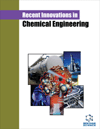
Full text loading...
We use cookies to track usage and preferences.I Understand

A series of Cu-montmorillonite clay composites (MtCs), prepared through cation exchange and wet impregnation with varying amounts of copper, have been tested for the direct oxidation of methane to methanol.
The catalysts have been characterized using several analytical techniques, including surface area BET, X-ray Diffraction (XRD), Scanning Electron Microscopy (SEM), Transmission Electron Microscopy (TEM), ammonia temperature-programmed desorption (NH3-TPD), and pyridine desorption, followed by Fourier Transform Infrared (FTIR) spectroscopy. Catalytic tests have been conducted at various temperatures and pressures using hydrogen peroxide as the oxidizing agent.
The characterization results have indicated the incorporation of copper species to not significantly modify the clay composite morphology. The TEM images of the samples with low copper content (0.8 Cu wt.%) have shown the copper particles to be uniformly distributed. Conversely, for the higher copper content samples (3.5 Cu wt.%) prepared by wet impregnation, the copper particles have been distributed around the montmorillonite clay composites. It has been observed that silica (MtC-Si) and aluminum (MtC-SiAl) montmorillonite clay composites have exhibited notable differences in acid site strength and distribution, influencing the dispersion and type of copper species being active for direct oxidation of methane to methanol.
The findings have indicated the well-dispersed copper species, favored by the structure MtCs, to result in enhanced catalytic activity for methane’s oxidation to methanol.

Article metrics loading...

Full text loading...
References


Data & Media loading...
Supplements